The kitchen dresser, and why it's 'more important than central heating'
What is a country kitchen without a dresser overflowing with crockery, car keys and keepsakes? Flora Watkins explains all.


A dresser is ‘a requirement, is it? More important than central heating?’ asked Kirsty Young of Emma Bridgewater when she was on Desert Island Discs last year.
‘Oh yes,’ she replied emphatically. ‘It’s much more important than central heating.
When Miss Bridgewater was cast away last year, she revealed that the inspiration for her wildly successful pottery business was her mother’s kitchen dresser.
‘Every house we lived in had one,’ she recalled. ‘From the beginning, I can remember a non-matching situation… no two plates the same, certainly no two mugs… and that seemed just right. And then, all amongst it, there were invitations, desiccated bridesmaids’ bunches and, if I won a little silver cup running at school, that would be in there.’
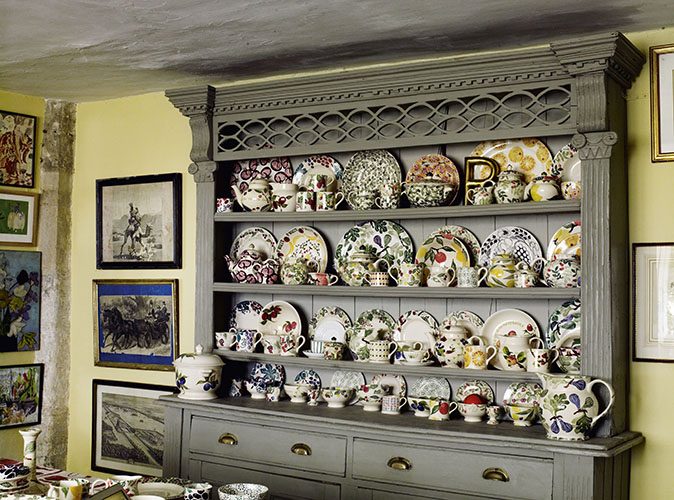
An inventory of my own dresser reveals a similar mish-mash. A potato-print Mothering Sunday card and a pussy-willow Easter ‘tree’ hung with miniature rabbits and eggs that I really must get round to taking down. Several Bridgewater mugs, now for display purposes only (having lost an argument with the butler sink), their handles welded back on with brown rivulets of Araldite. Another mug, proclaiming ‘I’d rather be beagling’, bottles of damson gin and blackberry whisky, a Bibendum ashtray purloined during a jolly birthday dinner many years ago.
Somewhere behind all that is the blue-and-white Spode platter that it only seems right to use for roast rib of beef, Beatrix Potter Wedgwood egg cups from my childhood and the green majolica plates inherited from my grandmother, along with her Indian Tree teapot with the dribbly spout.
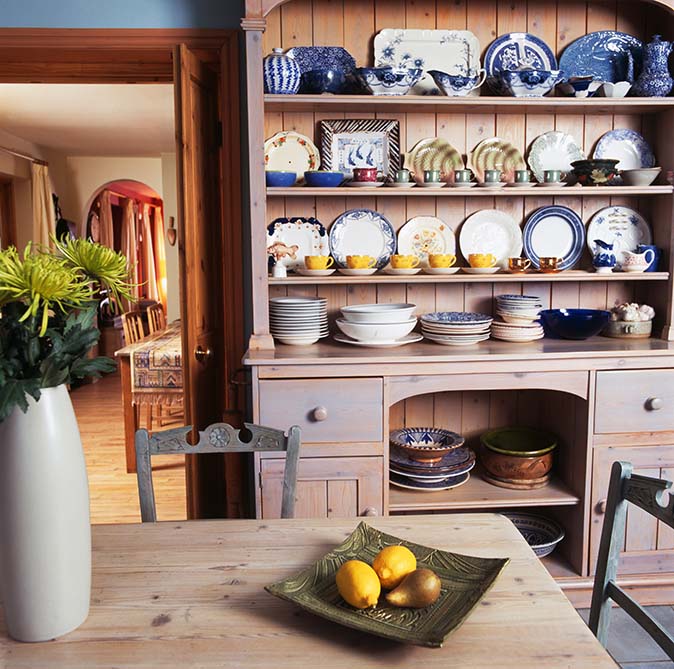
‘It’s the centre of my kitchen,’ declares Belinda Wilkins of the dresser that she and her husband, Miles, installed when they moved into their house in the West Sussex Downland village of Walberton 40 years ago. They found the shelves in an outhouse, but the base was made by a local carpenter from a cedar tree, the original being ‘woodwormed out’.
Exquisite houses, the beauty of Nature, and how to get the most from your life, straight to your inbox.
‘I couldn’t survive without it,’ she continues, ticking off the contents. ‘Side-saddle area and national trophies, raffle prize from the Chid and Lec [hunt] pub supper, cardboard Brooke Hospital collecting box. Phone chargers. Fly swat, meet card, top-hat brush. At the very top are some darts, put up there with the sparklers when my children were small – they’re now 30 and 35,’ Mrs Wilkins laughs.
The best dressers are to be found in houses in which ‘dust’ is a noun, not a verb. They’re found in kitchens that are the antithesis of those soulless industrial ones – all white laminate, chrome and concrete – that look more like the inside of Huntingdon Life Sciences than the heart of a home. There will likely be a couple of dog beds at the foot of this dresser and, almost certainly, some chipped Copeland dinner plates on the shelves, plus a lazy Susan holding sticky jars of Marmite and jam, at least one dating from the end of the past century.
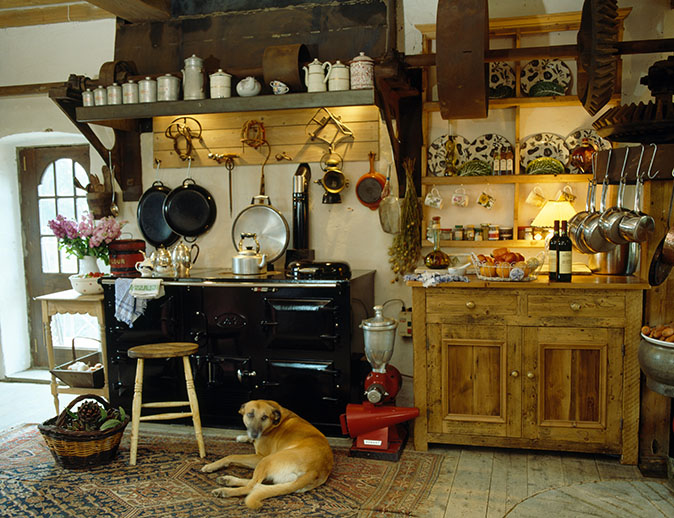
During a break from lambing on the family farm at Beverston in Kent, Harriet Challis jokes that ‘there’s probably going to be a massive family row about whose it is’ when it comes to who will inherit her mother’s dresser.
Bought by her antiques-dealer father, Robin, many years ago, it’s ‘covered in quite a lot of Mum’s stuff and some of mine’, but currently resides in Harriet’s kitchen, in a converted barn on the farm.
‘It’s got everything from a Lego man to some quite nice plates, rosettes across the top and a flag my other half got for sailing round Cape Horn, down to a changing mat and nappies [for baby Benedict, aged one] on the bottom,’ adds Miss Challis.
‘It would be a nightmare if it went because it just keeps everything – bills, letters and photos get tucked in behind plates with pictures the boys have done. The car keys are on mug hooks. Everyone is quite sentimental about it.’
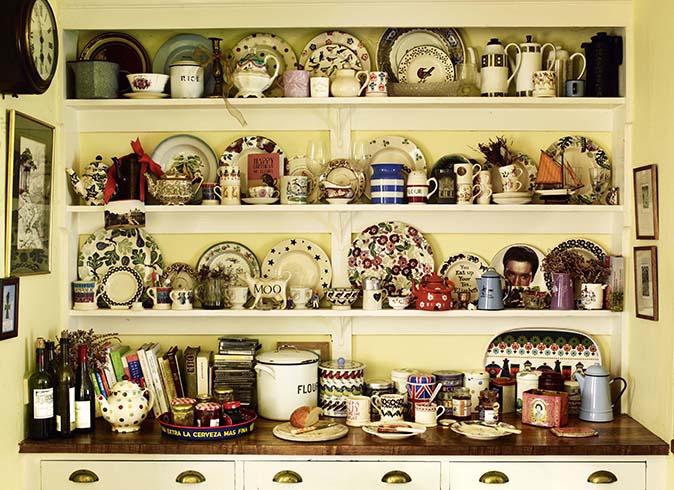
That’s the funny thing about dressers – although they’re incredibly sentimental objects, imbued with history and heritage, it often isn’t our own immediate family history.
Dressers are usually bought, such as that of the Challis family, or cobbled together as Mrs Wilkins’s was. They’re not the sort of thing handed on during one’s own lifetime – they’re just too useful – nor do they make a suitable wedding present. With bases averaging between 4ft and 6ft wide, they’re not going to fit in a galley kitchen in a flat in Fulham.
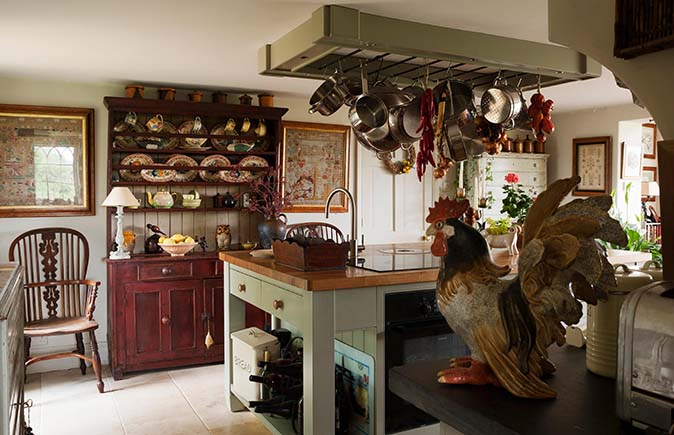
I found mine, a ‘dog-kennel’ dresser (with a large gap in the middle – so useful for those giant Le Creuset casseroles) at the Victorian Pine Workshop in Surrey. Once in the basement kitchen of my London terrace, it immediately felt as if it had been there since the house was built in 1860.
When Caroline Payne’s family decamped from an oast house on her parents’ estate in East Sussex to the Cotswolds in 1992, she found herself needing to furnish a large farmhouse kitchen. Naturally, a dresser was on the shopping list and found ‘in a pine shop near us in Sussex’. Today, it resides at the head of the kitchen at West End Farm in Shipton Moyne, which the Paynes bought from legendary Beaufort huntsman Capt Ian Farquhar.
‘It’s a proper working dresser because it has all the bowls and plates we use every day – those lovely Mason’s Ironstone gamebird plates. It’s also plastered with rosettes and funny cards, including lots of Tottering and some terribly rudes ones.’
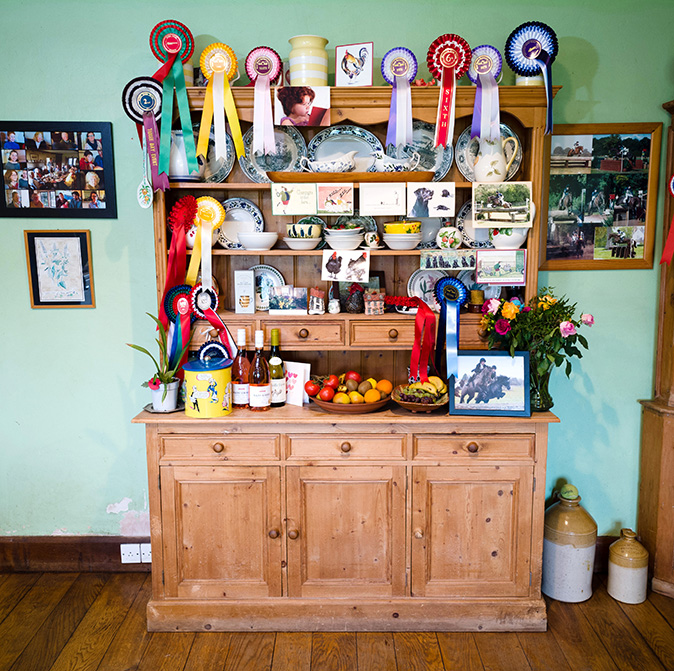
The rosettes that adorn Mrs Payne’s dresser like colourful camellias are the sumptuous, triple-tier sort, won by their homebred eventers. There are also photos of horses leaping fearsome obstacles and a recent addition, taken last season, shows her daughter, Selina, and 13-year-old granddaughter, Clementine, ‘in full cry’ flying a Beaufort wall.
Kitchen dressers can be as eclectic and mismatched as Bridgewater cups and saucers. They may be the traditional oak or Victorian pine, Welsh (the classic two-piece), Irish (one-piece), a treasured hand-me-down or salvaged from a skip, painted or buffed to a dark patina with beeswax. Whatever its provenance, it’s fair to say that, if the kitchen is the beating heart of the home, then it’s the dresser – rather than the Aga – that is the aorta. It’s from here that heat – of the rosy-glow sort – and heritage emanate around the house.
